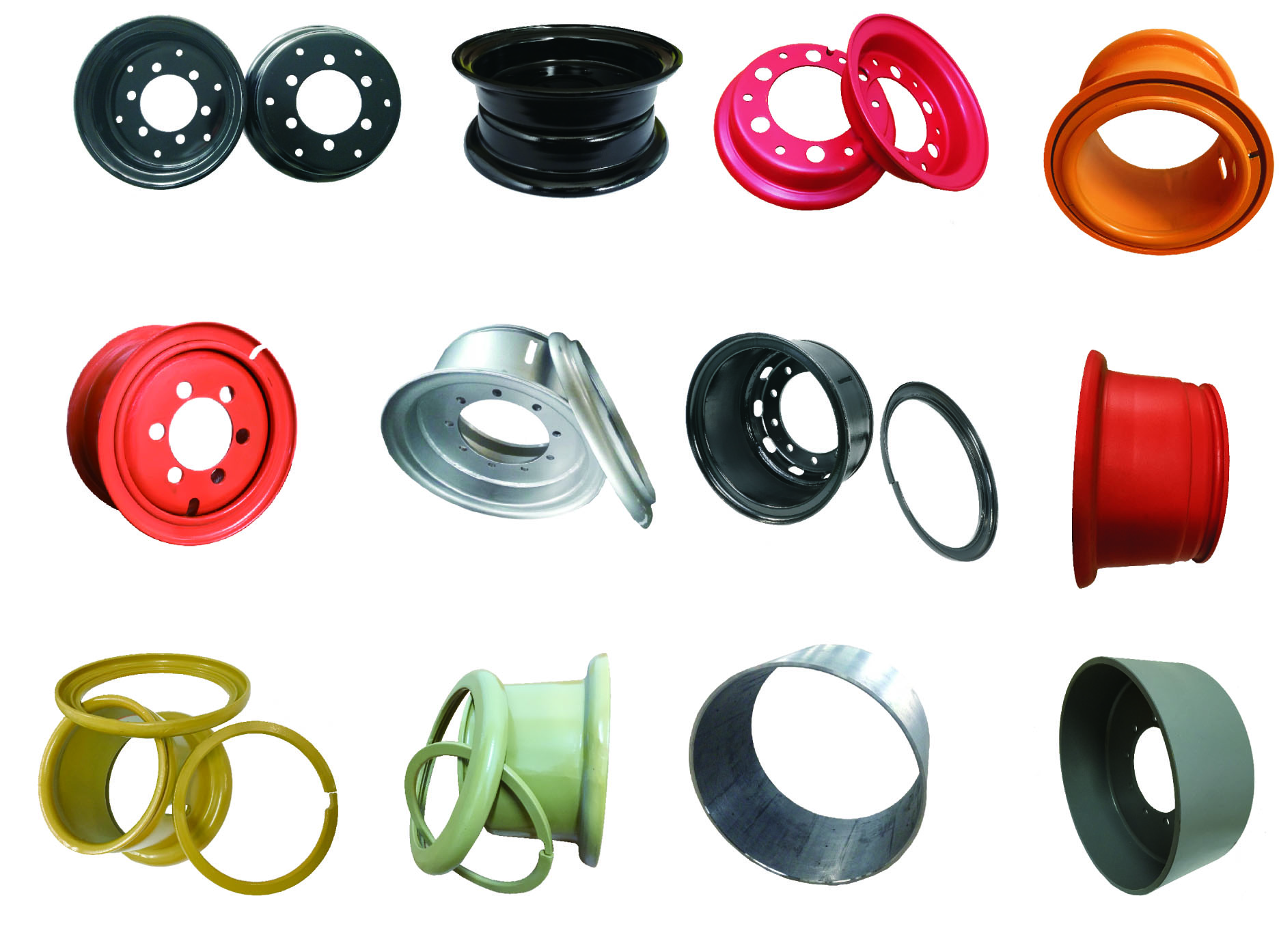Solid rims have become a critical component in modern industrial vehicles, offering increased durability, stability, and load-bearing reliability. As companies expand automation, logistics efficiency, and equipment safety standards, solid rims provide a long-lasting solution that minimizes downtime and improves operational performance. For B2B buyers, selecting the right solid rim structure is essential for ensuring long-term productivity and fleet stability.
Why Solid Rims Matter in Industrial and Heavy-Load Applications
Solid rims are engineered from high-strength steel or forged materials to withstand continuous heavy loads, high impact, and frequent maneuvering. Unlike multi-piece or pneumatic-support rims, solid rims eliminate the risk of rim deformation under extreme stress, making them ideal for forklifts, skid-steers, port equipment, mining machines, and industrial trailers. Their rigid, maintenance-free design allows vehicles to operate confidently in challenging environments with heavy lifting requirements.
As industries push for higher uptime and safer material handling, solid rims provide a stable foundation for both solid tyres and pneumatic tyres operating in demanding conditions.
Key Advantages of Solid Rims
-
Exceptional structural strength for heavy-load operations
-
Reduced maintenance due to non-deforming, one-piece design
These benefits make solid rims an essential choice for equipment working in high-impact, high-frequency environments.
Engineering Structure and Material Composition
Solid rims are designed using precision forging and heat-treated steel to offer superior resistance against bending, cracking, and fatigue. Depending on the vehicle type and tyre system, solid rims may be produced in one-piece or specialized reinforced configurations.
Key engineering characteristics include:
Heat-Treated Steel Construction
High-grade steel enhances strength and ensures uniform stress distribution across the rim surface.
Reinforced Flanges and Disc Plates
Support the vehicle’s weight and reduce distortion during sudden impact or continuous high load.
Precision Machining for Tyre Fitment
Ensures seamless compatibility with solid tyres, press-on tyres, or pneumatic tyres, reducing installation time and minimizing vibration.
Anti-Corrosion Surface Treatment
Powder coating, electrophoretic coating, or galvanizing helps protect the rim from rust, chemicals, and abrasive surfaces.
These construction features collectively improve durability and ensure consistent performance in harsh industrial environments.
Applications Across Logistics, Construction, Ports, and Mining
Solid rims are widely used in sectors where safe load handling and structural stability are essential. They provide the foundation for vehicles operating under demanding conditions such as uneven surfaces, sharp debris, or constant loading cycles.
Common applications include:
-
Forklifts (Class I–V), telehandlers, reach stackers, and warehouse equipment
-
Skid-steer loaders, compact construction machinery, and earth-moving equipment
-
Port vehicles such as terminal tractors, container trailers, and rubber-tyred gantry cranes
-
Mining transport vehicles and underground material-handling machines
In each of these applications, solid rims support heavy vertical loads and lateral forces, enabling more stable and reliable vehicle operation.
Performance Characteristics and Operational Benefits
Solid rims are engineered to improve vehicle safety and operational efficiency. Their structural rigidity and optimized geometry ensure smooth equipment handling even under extreme work conditions.
High Load Capacity
Solid rims withstand constant vertical loads, lateral stress, and abrupt shock from uneven terrain, making them suitable for high-capacity lifting equipment.
Reduced Tyre Slippage and Better Torque Transfer
A secure rim-to-tyre interface enhances traction, improves torque delivery, and ensures consistent driving performance.
Lower Risk of Rim Failure
The absence of welded seams or multi-piece joints reduces mechanical failure points and enhances safety during high-duty cycles.
Extended Service Life
Solid rims typically outlast standard rim structures by maintaining shape integrity and resisting wear caused by continuous material handling.
Selecting the Right Solid Rims for Your Industrial Fleet
Choosing the correct solid rim depends on vehicle specifications, operational environment, and tyre type. B2B buyers must evaluate several performance factors before procurement:
-
Load rating and weight distribution requirements
-
Compatibility with solid, press-on, or pneumatic tyres
-
Rim diameter, width, bolt pattern, and center hole tolerance
-
Working conditions such as indoor/outdoor use, surface quality, and exposure to chemicals
-
Heat buildup during continuous operation
For high-intensity environments, reinforced solid rims with thicker flange sections and special heat-resistant coatings are often recommended.
Industrial Trends Shaping the Future of Solid Rims
As material-handling industries become more automated and energy-efficient, solid rim technology is evolving. Lighter high-strength steel alloys are reducing rim weight without compromising durability. Precision machining is improving fitment accuracy, minimizing vibration, and enabling seamless integration with electric forklifts and automated guided vehicles (AGVs).
Sustainability is becoming a procurement priority as well. Many manufacturers are adopting recyclable steel materials and environmentally friendly surface treatments to reduce the ecological impact of rim production.
In addition, global supply chain expansion is driving demand for standardized rim specifications that comply with international safety and performance certifications.
Conclusion
Solid rims play a vital role in supporting industrial vehicles that operate under heavy loads and demanding work conditions. Their durable construction, high load capacity, and maintenance-free performance make them ideal for forklifts, construction machinery, port equipment, and mining applications. For B2B buyers, selecting the right solid rim is essential for improving fleet reliability, reducing maintenance downtime, and maximizing long-term operational efficiency. As industries evolve, solid rims will continue to be a foundational component of safe and efficient material-handling systems.
FAQ
1. What is the main advantage of solid rims over multi-piece rims?
Solid rims eliminate weld joints and assembly components, offering higher structural integrity and reduced failure risk.
2. Are solid rims suitable for both solid and pneumatic tyres?
Yes. Solid rims can be engineered to fit solid, press-on, or pneumatic tyre systems depending on the vehicle type.
3. Do solid rims improve equipment stability?
Absolutely. Their rigid construction reduces vibration and enhances load-handling safety.
4. How should businesses choose the right solid rim?
By evaluating load capacity, tyre compatibility, operating environment, and rim dimensions according to vehicle specifications.
Post time: 20-11-2025

